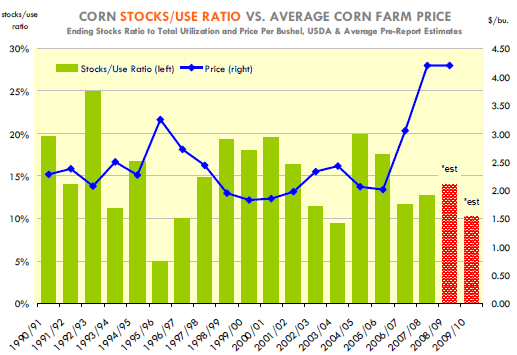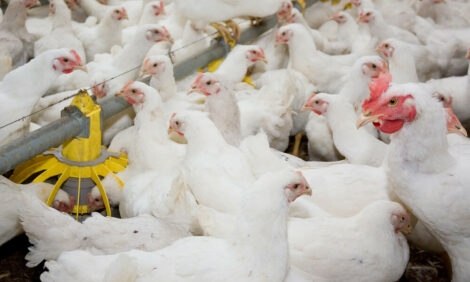



CME: New Crop Corn Ending Stocks Lower
US - CME's Daily Livestock Report (7 May 2009) reports that on 12 May, USDA will release its first official estimates of US corn supplies in the upcoming marketing year 2009/2010.The new marketing year starts 1 September with the harvest of the corn crop that is currently being planted across the US. USDA also will revise its estimates of expected use and ending stocks for the old corn crop based on updated information about exports and corn utilization rates. A recent Reuters poll of analysts indicated that they on average expect old corn crop stocks to be 1.687 billion bushels, only slightly lower than the 1.7 billion bushel figure USDA reported in April. They also on average peg new crop corn ending stocks at 1.283 billion bushels, notably lower than previous unofficial USDA estimates.
In the February Outlook forum, USDA put ending stocks for the new corn crop at 1.720 billion bushels, an estimate that reflected planting expectations for 86 million acres of corn. That estimate proved to be a bit too optimistic as the March plantings survey indicated that farmers would likely plant about 85 million acres. Keep in mind, however, that this number reflects the results of a poll that was done back in February. Since then, a number of things have happened. The main one is the shift in the value of soybeans vs. corn.
November bean futures in early March were priced at around $7.9 per bushel. They are currently trading at $9.7, a 23 per cent increase. In the meantime, corn futures have been more volatile and increased just 11 per cent in that time frame. Also important is the current delays in planting the new corn crop. As pointed out on Monday, only 33 per cent of the corn crop had been planted as of last Sunday and this week progress has been slow due to excessive rain in a number of areas. Given the current surge in soybean futures and the delay in corn plantings, there is an expectation that even more acres will migrate from corn to beans, further limiting corn supplies next year.
USDA normally uses planting survey numbers and trend yield data in its first supply and demand report but we shall see if they decide to make some changes this year based on the realities on the ground. Indeed, if USDA does change expected planted acres and also adjusts yields lower given the slow pace of plantings, then we could see ending stocks be even lower than the average of estimates, some even see them dipping below the 1 billion bushel mark and to less than 8 per cent of use. Demand, on the other hand, remains a big unknown but one that the market will focus fully on only after the new crop has been harvested in the fall.










